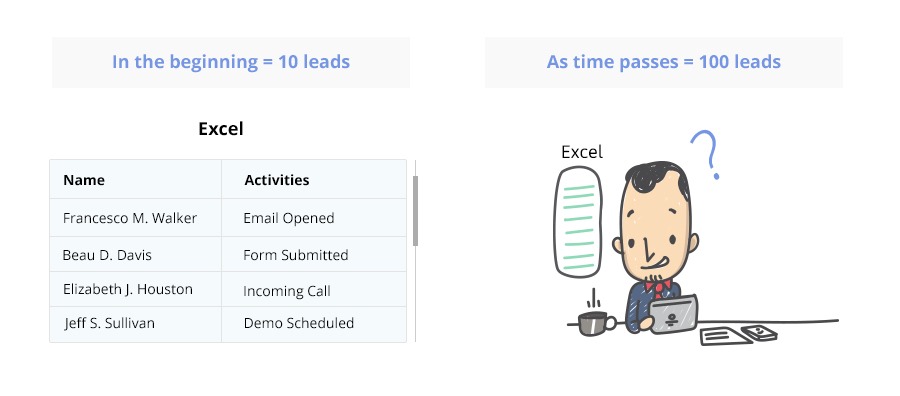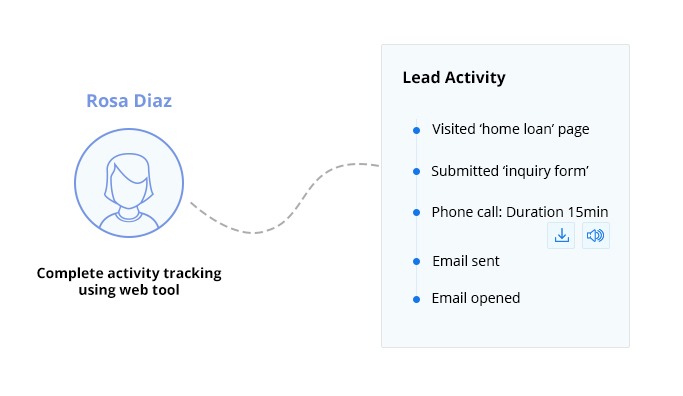You know that your business thrives on sales, and the only way to make sales is for your sales team to take action. The problem is that the sales team is sometimes uncoordinated and lacking in focus. The ultimate goal that every team member aims for is to make a sale, and they may be aware of your company’s sales process, but that doesn’t necessarily make it any easier for them to actually close a deal.

However, relieving as much pressure from each individual and having a concentrated team effort can improve sales figures quite dramatically – but how can this be achieved? In an organization of any size, they key is communication and monitoring what is happening at any given time.
If there are just two members on the team, the communication is easy (if they put their minds to it). But keeping track of five, ten, or a hundred leads is not so easy. Who makes the next call? Who sets up the next demo? More importantly, which needs to be called? Not just that, who is actually picking up the phone to do it?
In days gone by, when people wanted to make a call, they would often talk to the telephone operator. The operator would connect calls by plugging a cable into a socket, physically connecting the lines. Wouldn’t it be great to have someone – or something – focused to your sales operations to make sure everything is connecting as it should?
Keeping track of sales activities
By using a web-based tool you can rocket forward to the modern era and leave the telephone operator behind. Because the data can synchronize through the internet, it is accessible anywhere you have an internet connection. This is perfect for when your sales team is mobile, but also works well in an office environment – or a combination of the two.
You could use a simple spreadsheet or shared document to track when calls are made (or need to be made), which customer needs a demo setting up, and who has been sent an email.

The problem with that system is that it soon becomes limited when there are more than a couple of members of the sales team, and more than three or four clients. Do you have a new page for each client? Or for each team member? Maybe you could do it on a spreadsheet. Maybe your spreadsheet would constantly grow as you realize you need more columns every day.
And the whole system falls down when someone forgets to add the information in the right place.
Worse still, what if someone adds information on the wrong client? “This guy likes talking about cigars, that’s the way to gain his trust” writes one salesperson (in the “customer notes” column they just added)…and the next time that person is called, the sales team ask about their love of cigars. Except the information was recorded on the wrong row in the spreadsheet and this customer is an ardent anti-smoker. How do you think the rest of the sales call might go?
Improving conversions through coordinated sales activities
With a dedicated web-based system, rather than something put together from resources that were never intended to work in the way they are being used, your sales team will function in a much more effective manner.
A CRM database is a great start, enabling information about each customer (or lead) to be recorded and for it to be obvious that it’s the right customer. When this can be linked to sales records, the sales team can refer to previous sales and see what the customer has previously bought, leading the way for further sales to be made.

Notes can be added for when calls are made, emails or texts are sent, when follow-up calls need to be made, and so on. Tracking where the customer is within the sales process can also be done – if there’s a predefined route your leads take before making a purchase, you can evaluate each client based on that.
This becomes even more important when you understand how your customers think – if you follow the process through, you’ll almost guarantee a sale. With comprehensive reporting, you’ll even be able to identify who the customer is that is most likely to be the next one to purchase from you – and you can dedicate your efforts in their direction.
But one of the most important factors in this process is that as all the data is centralized and synchronized, any member of the sales team can pick up where another one left off. There’s no guessing around who is waiting for something, or what a lead’s preferences are, as it is all right there on the screen.
Automating Sales Activities
By linking such a system into your sales activities, you open the door for automation. This takes the pressure off the sales team, as mundane tasks can run without intervention. Suppose a lead has clicked a link in an email and visited your website, but not bought anything.
Automation can send a second email that shows related products at different price points to entice them back again – and when they click a link, a task can be automatically added to their customer record indicating that a member of the sales team should call and talk to them.
That customer is obviously interested and might just need a little clarification on what your products do. How much easier could it be?
Tasks like manually sending emails and making calls can also be automatically tracked, and sales reports can automatically be sent to managers. And when that customer wants a demo of a product at their office, the progress of the sales team member can be tracked to make sure they arrive on time!
If you aren’t tracking your sales activities there’s a strong chance that you are missing out on sales opportunities that are just waiting to happen. Tracking as much as you can and automating tasks will make your sales team more effective and will likely increase overall sales.







![[Webinar] Maximizing ROI with WhatsApp CRM](https://www.leadsquared.com/wp-content/uploads/2024/07/Maximizing-ROI-with-WhatsApp-CRM-webinar-popup.gif)
